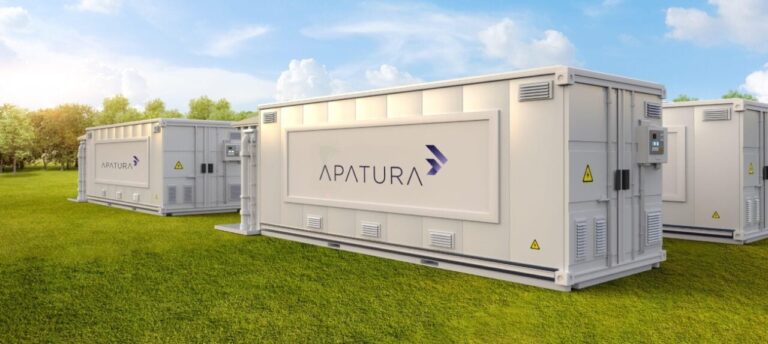Renewable energy storage company Apatura has been granted planning permission to build and operate a 100 MW battery energy storage system (BESS) near Dundee in Scotland.
Scottish ministers have approved the plan, which will consist of 52 lithium-ion batteries in steel containers connected directly by underground cable to the nearby Tealing substation. Notably, local authority Angus Council has lodged no objections to the proposed development.
The council noted: “The development would contribute to meeting the government’s energy targets and generally complies with the relevant policies of the Angus Local Development Plan and the National Planning Framework 4 [for the development and use of land].”
The 2.5 hectare site, 7.5 kilometers north of Dundee and 1.8 kilometers south-west of Tealing village, is set in open countryside and development includes the planting of new native species of trees and wildflowers to achieve a net biodiversity gain at the location.
Andrew Philpott, Chief Development Officer at Apatura, said: “The proximity to the existing Tealing substation makes the site an ideal location for energy storage. Importantly, the proposed development will provide a significant boost to the local economy by creating jobs during the construction, operational and eventual decommissioning phases of the facility, as well as indirect job creation in supply chain, maintenance and other related services.
BESS in Great Britain
This latest approval follows the company gaining approval for a 700MW BESS at Inverclyde, which, once completed, will be Scotland’s largest standalone BESS. It is also the largest project for which Apatura has received approval for its 10GW pipeline.
Apatura’s successes come as Cardiff City Council unanimously approved a 1,000 MW BESS, the largest in Britain, to obtain planning permission. Meanwhile, developer OnPath Energy’s 200MW BESS in Bathgate, Scotland, has passed through West Lothian Council’s executive committee without objection.
The approvals are timely, after several companies’ operational BESS was ramped up during interconnection outages. When the NSL interconnector stopped exporting power from Norway to the UK, Roger Hollies, CTO at Arenko Group, posted on LinkedIn that 1.5 GW of batteries in NESO’s network could inject power into the grid during the disruption , including 12 batteries on Arenko’s Nimbus. platform.
In addition, the Moyle interconnector, which runs between Ireland and Great Britain, stumbled when Statkraft BESS was activated to stabilize the British and Irish electricity grids.
In other applications, battery storage technology is somewhat overlooked, which is highlighted by a open letter written by developers including Zenobē and Harmony Energy. In response to fears that the Balancing Mechanism is not using BESS properly and is opting for other, often more expensive solutions, the National Energy System Operator (NESO) has set out four ‘short-term’ actions to achieve a ‘meaningful impact’ have on the skip percentage.
NESO also committed to continue work on a number of changes to the code, to revise and clarify the ’30-minute rule’ and to review the balancing reserve and broader reserve acquisition strategies.


